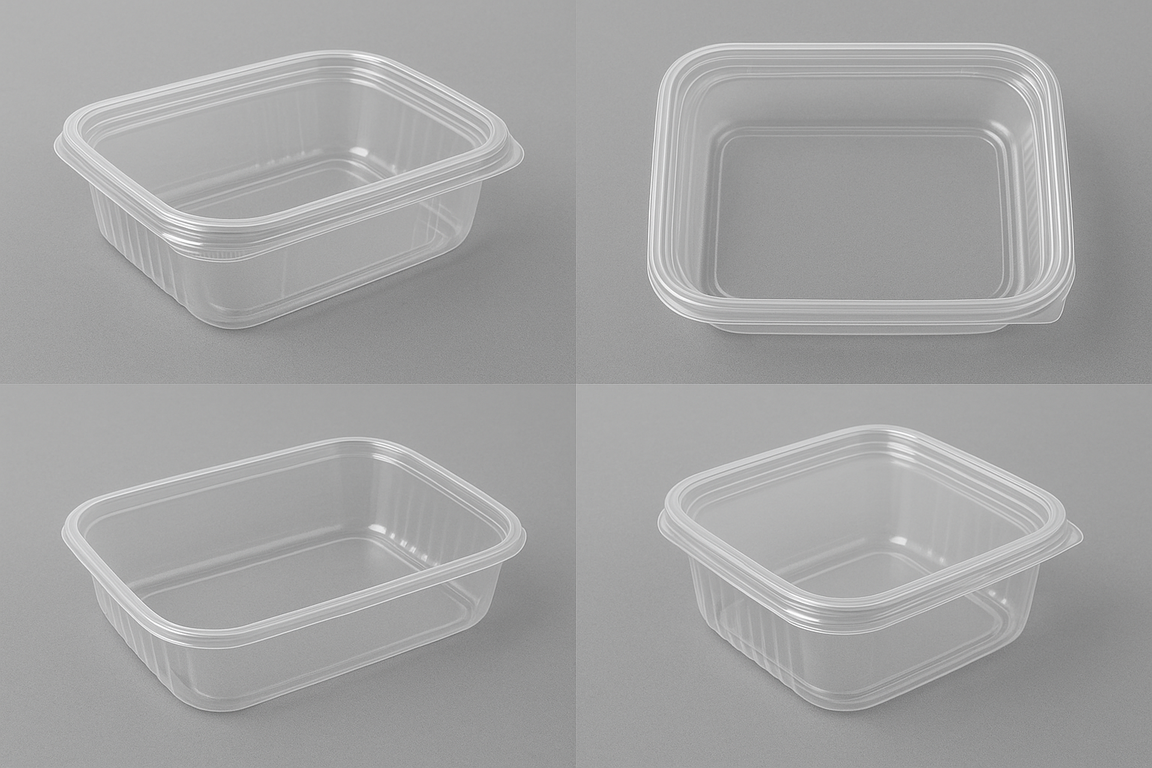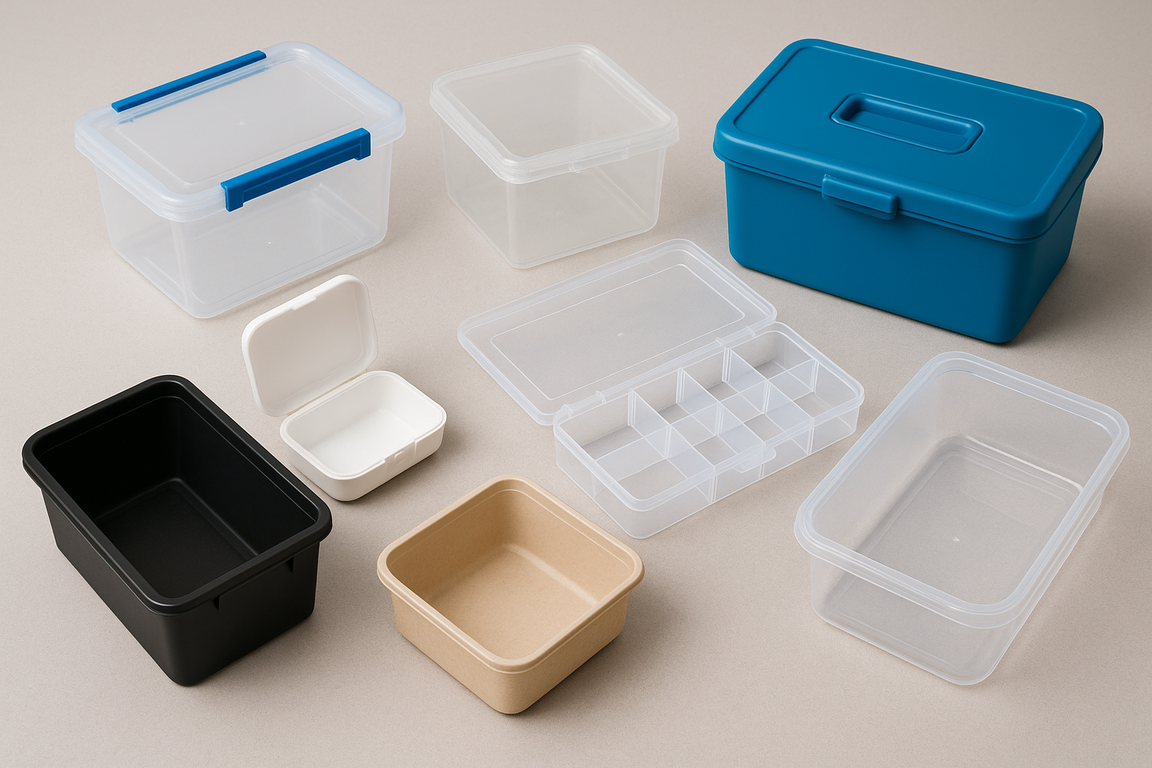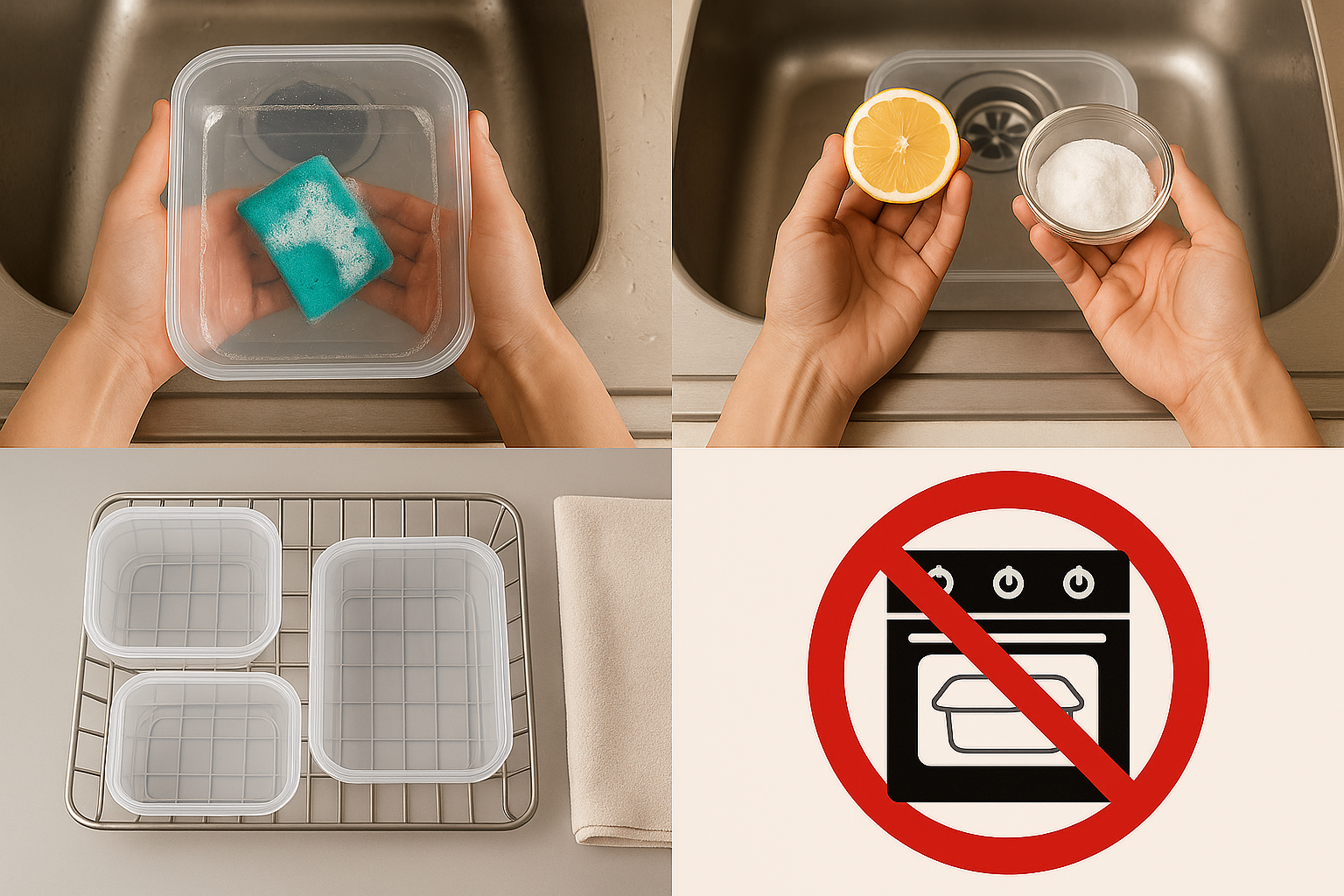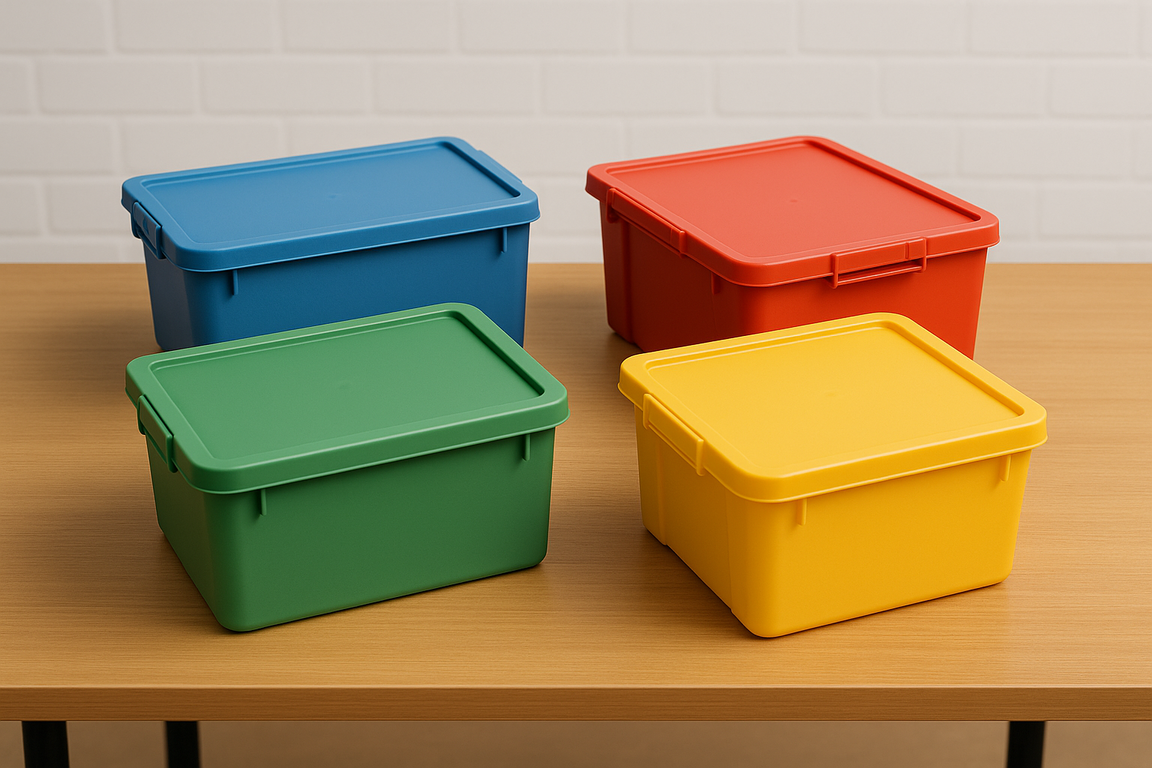Plastic boxes are an indispensable item in every kitchen — whether for meal prep, leftovers, fresh food, or dry goods. However, improper use or storage can easily lead to yellowing, odors, scratches, or worse — health risks. Learning how to store your plastic box properly not only helps extend its lifespan and save money but also ensures food safety for your family. This article walks you through practical, science-backed steps to take care of your plastic containers the right way, right at home.
Read more: 7 Ways to Open a Tight Plastic Lid: Have You Know These?

How to store your plastic box properly?
1. Why Is It Important to Take Care Plastic Box Properly?
1.1. It Affects Your Health and Food Safety
Many plastics can release harmful chemicals like BPA (bisphenol A) when exposed to high heat or when heavily scratched. According to the U.S. FDA, using low-quality plastics or misusing plastic containers can pose risks to human health — especially when storing hot or acidic foods.
1.2. It Saves You Money and Reduces Waste
Instead of frequently replacing boxes that become stained, warped, or smelly, proper storage and maintenance can keep a plastic box usable for 2–3 years. It’s a simple, long-term way to cut down on unnecessary household expenses.
1.3. It Helps the Environment
Constantly throwing away old plastic boxes contributes to plastic waste. According to UNEP (United Nations Environment Programme), the world generates more than 300 million tons of plastic annually, much of it from short-use household items. Reusing plastic containers responsibly helps reduce this environmental burden.
2. Understand Your Plastic Box Before Storing
Not all plastic boxes are created equal. Knowing their material and intended use helps you store and maintain them properly.

Understand your plastic box before storing
2.1. Sort by Material
Common types of plastic used in containers include:
- PP (Polypropylene): Safe for food, microwave-friendly.
- PET (Polyethylene Terephthalate): Often used for beverages; not suitable for repeated use.
- HDPE (High-Density Polyethylene): Durable and strong, ideal for liquids.
Tip: Look for the recycling code “5” (PP) on the bottom — this is the safest type for food and microwave use.
2.2. Sort by Usage Purpose
- Fresh food storage: Requires airtight seals and heat resistance.
- Dry food storage: Needs moisture-proof lids and stackability.
- Non-food items: Don’t require tight sealing but should be easy to clean.
Using the right box for the right task helps prevent staining, odor buildup, and premature wear.
2.3. Check for Safety Indicators
- Look for recycling symbols and material codes at the base of the box.
- Avoid using boxes without clear labeling or from unknown sources.
- Replace any box that is discolored, heavily scratched, or warped.
3. Step-by-Step: How to Take Care Plastic Boxes at Home
3.1. Clean After Every Use
Proper cleaning is the foundation of plastic box maintenance.
- Wash with warm water and mild soap to remove grease and food residue.
- Avoid using steel wool or abrasive scrubbing pads, which scratch the surface.
- Use soft cloths, sponges, or soft-bristle brushes.
- Pay extra attention to the lid and silicone seal — where bacteria and smells often hide.
Example: After storing oily foods like curry or tomato sauce, soak the box in warm water mixed with vinegar for 10 minutes before washing.
3.2. Deodorize and Prevent Yellowing
Plastic tends to absorb strong food odors or pigments. Here’s how to fix that:
- Baking soda: Mix 2 tablespoons with water into a paste, apply inside the box, leave for 15 minutes, then rinse.
- Lemon or white vinegar: Soak the box in diluted lemon juice or vinegar for 30 minutes to eliminate odors and brighten the surface.
- Air dry in the sun: Leave the box in sunlight for 1–2 hours to naturally disinfect and freshen it — but avoid long exposure to prevent brittleness.

How to Take Care Plastic Boxes at Home?
3.3. Dry and Store in a Well-Ventilated Place
Once your plastic box is clean, drying and storing it properly is just as important:
- Dry upside down in a well-ventilated area: Avoid sealing the lid immediately after washing, as trapped moisture may lead to mold or odors.
- Avoid direct, prolonged sunlight: Excessive heat can cause plastic to become brittle or discolored.
- Stack smartly: Do not pile too many boxes on top of each other, which may cause distortion or cracking of the lower containers.
Organize by size and purpose to make future access easier and prevent unnecessary wear.
3.4. Avoid Misuse of Plastic Boxes
Even durable plastic boxes have their limits. Here’s what you should avoid:
- Don’t microwave boxes without a microwave-safe label: Some plastics can leach chemicals when heated.
- Avoid placing boxes in the freezer for extended periods: Not all plastics handle deep-freezing well and may crack or warp.
- Limit storing acidic foods (e.g., vinegar-based pickles or citrus juice) for long durations, as acid may interact with certain plastics and compromise both container and contents.
4. Common Mistakes to Avoid When Using and Caring Plastic Boxes
Understanding what not to do can extend the life of your plastic containers:
4.1. Sealing the Lid While Still Wet
Sealing a moist plastic box creates the perfect environment for bacterial growth and unpleasant smells. Always let the box dry completely before closing.
4.2. Ignoring Microwave Safety Labels
Not all plastic boxes are microwave-safe. Using the wrong type can lead to deformation, melting, or chemical leaching. Always check for a microwave symbol or the code "5 (PP)".
4.3. Storing Near Heat Sources
Even heat-resistant plastic shouldn’t be placed near stovetops, ovens, or hot appliances. Long-term exposure to high heat can cause warping, loosening of the lid, or structural damage.
4.4. Reusing Old, Scratched, or Discolored Plastic Boxes
Boxes with visible damage may harbor bacteria or release microplastics. If a plastic box has rough surfaces, persistent odors, or cloudy discoloration, it’s time to replace it.

Common Mistakes to Avoid When Using and Caring Plastic Boxes
5. Frequently Asked Questions (FAQ)
Q1. How do I prevent staining from colored foods like turmeric or tomato?
Before storing, lightly coat the inside of the box with cooking oil to form a barrier. Alternatively, soak in baking soda solution after use.
Q2. Is it safe to store hot food in a plastic box?
Only if the box is marked microwave-safe or heat-resistant. Pouring hot food into ordinary plastic may cause warping or chemical migration.
Q3. Is it harmful to keep plastic boxes in the fridge?
No, as long as you're using food-grade, BPA-free plastic. Still, match the plastic type to the intended fridge zone — some are better for cold storage than freezing.
Q4. What’s the best way to remove bad smells from a plastic box?
Natural deodorizers like lemon slices, white vinegar, or dry coffee grounds placed inside overnight work well. Baking soda is also an excellent option.
6. Conclusion: Care It Right, Make It Last
Though often overlooked, plastic boxes play a crucial role in organizing and preserving food safely. By storing them properly—cleaning, drying, and using them correctly—you extend their usability and protect your health.nRemember the three golden rules: clean well, dry thoroughly, use appropriately.nAnd when a box is old, scratched, or stained beyond repair, don’t hesitate to replace it. A small change can make a big difference for your kitchen hygiene and the environment.
7. About EUROPLAS – Smart Plastic Solutions for Daily Life
EUROPLAS (European Plastic Company) is one of the world’s leading masterbatch manufacturers, offering innovative plastic materials for various industries. With over 15 years of experience and exports to more than 95 countries, EUROPLAS is committed to delivering not only high-quality products but also sustainable, eco-conscious solutions.
Featured Product Lines:
EUROPLAS' products can help businesses to create many plastic products, including plastic box. If you are interested in a collaboration, do not hesitate to contact us.